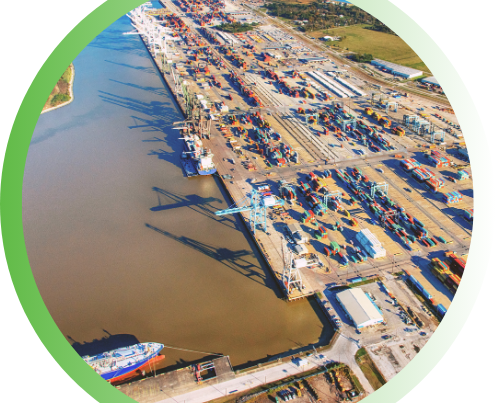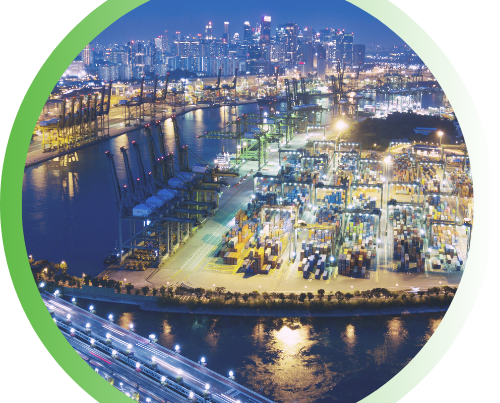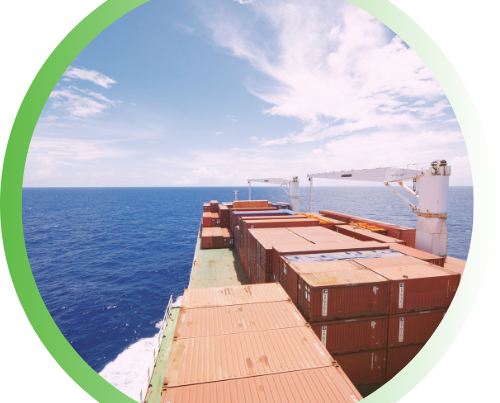Red Sea Navigational Challenges and Strategic Responses
Persistent Security Risks Prompt Caution
The Red Sea, critical for approximately 12% of global trade, remains a zone of heightened security risk due to ongoing attacks by the Houthi militia from Yemen. These attacks, including a recent assault on the MSC United VIII, have prompted shipping companies to reassess their navigational strategies.
Divergent Strategies Among Shipping Giants
While Hapag-Lloyd opts to continue its detour around the Cape of Good Hope, Maersk, and CMA CGM are taking a different approach. Maersk has begun to schedule some vessels through the Red Sea again, in the context of the US-led Operation Prosperity Guardian. Meanwhile, CMA CGM is also planning a gradual increase in Red Sea sailings, balancing the need for efficient routes with the paramount concern for crew safety.
Impact on Global Shipping and Trade
The strategic rerouting and pauses in operations have led to extended transit times and are expected to significantly influence global supply chains. The shift away from the Suez Canal route to the Cape of Good Hope not only adds days to voyages but also incurs higher shipping costs. Analysts anticipate a substantial rise in freight rates, further exacerbated by the upcoming Chinese New Year, a period traditionally marked by a surge in shipping demand.
Future Outlook and Industry Adaptation
Shipping companies continue to closely monitor the situation, ready to adjust their strategies in response to changes in regional stability. The industry remains alert to the evolving geopolitical landscape, ensuring that contingency plans are in place to navigate these complexities efficiently. As the situation in the Red Sea continues to unfold, the global shipping industry braces for potential impacts on freight rates, supply chain dynamics, and overall maritime trade.


Malaysia Bans Israeli Vessels from Its Ports
Malaysia has imposed a ban on vessels operated by ZIM Integrated Shipping Services and those flying Israeli flags from docking at its ports. This action is in response to the conflict in Gaza. Previously, ZIM’s vessels were allowed in Malaysian ports since 2002, with permissions extended in 2005.
U.S. Targets Chinese Entities for Export Control
The U.S. Department of Commerce has added 13 Chinese entities, including two Foxconn subsidiaries and a logistics firm, to its Export Control Unverified List. This action indicates potential national interest concerns, placing these entities under closer scrutiny. These entities now face potential supply chain impacts and increased caution from U.S. exporters. They have 60 days to clarify product end-uses to avoid stricter restrictions. China opposes this move, viewing it as unjust suppression of its companies.

Port of Ensenada Imposes Container Tax
Mexico’s Port of Ensenada will charge a $5 tax on containers starting in 2024. The tax aims to fund road maintenance due to heavy container traffic. Industry professionals express concerns about potential adverse effects on nearshoring opportunities in Mexico. The tax could deter investments and diminish the port’s appeal, affecting Mexico’s economic strategy.
Logistics Company Transports Nuclear Power Equipment
A logistics company achieves a milestone by transporting radioactive nuclear power equipment from China to Germany. This first international shipment of its kind involved a complex “land+air+hazardous material” service. The operation showcases the company’s capability in specialized transport, particularly under China’s “Belt and Road” initiative. The team tackled challenges like radioactive nature, international permissions, and transport of oversized equipment, underlining the company’s expertise in handling intricate logistics tasks.


Douyin’s Food Delivery Service Scaling Down
Douyin, after dispelling acquisition rumors of Ele.me, is downsizing its food delivery operations in 30 Chinese cities. This strategic shift comes as regional agents face contract uncertainties by year-end. Douyin’s food delivery service, launched in 2021, struggles against established local business habits despite investments. A recent leadership change in Douyin’s life services sector signals a focus on core cities for a sustainable business model in the competitive food delivery market.
Port of New Orleans Secures Federal Funding
The Port of New Orleans receives a $73.77 million federal grant for the Louisiana International Terminal project, aiming for a 2028 completion. This terminal, set to handle 2 million TEUs annually, is part of a public-private partnership enhancing port capabilities. The grant supports the port’s strategy to accommodate larger vessels and boost connectivity, with significant economic benefits, including job creation and increased tax revenue.


Fire Extinguished on Nuclear-Powered Ship Sevmorput
Russia reports that a fire was successfully extinguished on the nuclear-powered cargo ship Sevmorput in Murmansk. There were no casualties or reactor threats. The Sevmorput, unique in its operational capacity, highlights Russia’s Arctic navigational capabilities. Its role emphasizes the strategic importance of the Murmansk region.
Port Houston Reports Mixed Trade Outcomes
Port Houston experiences varying trade trends, with a 16% drop in containerized imports but a 9% rise in loaded exports in 2023. Despite a decrease in general cargo and steel, auto imports surged. The port’s total tonnage decreased by 9%, but it continues adapting to changing trade dynamics.


Singapore Port’s Record-Breaking Maritime Traffic
Singapore’s port crossed a historic 3 billion gross tonnage in ship arrivals in 2023, bolstered by infrastructure and technology investments. The port’s efficiency and strategic location solidify its status as a leading maritime center amid global challenges.
Japanese Companies Push for Large LCO2 Carriers
Port Houston experiences varying trade trends, with a 16% drop in containerized imports but a 9% rise in loaded exports in 2023. Despite a decrease in general cargo and steel, auto imports surged. The port’s total tonnage decreased by 9%, but it continues adapting to changing trade dynamics.


